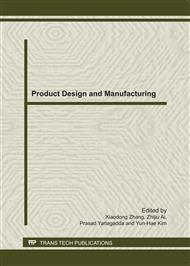p.618
p.622
p.626
p.635
p.639
p.645
p.649
p.656
p.661
Automated Assembly of Ship Panels Using an Integrated Robotic Tool
Abstract:
In this paper we developed a novel and cost effective automated system for use in the Australian shipbuilding industry. We began by investigating current shipbuilding processes and determining the most feasible area where automation could be further developed. Then we designed an automation concept with the objective of developing a highly flexible system. A prototype of the integrated tool was developed for preliminary testing in a simulated industry assembly process, the results of which were benchmarked against a manually fabricated assembly. The outcomes from the benchmarking showed the feasibility of such a system and allowed us to determine the future direction for further development of the integrated tool.
Info:
Periodical:
Pages:
639-644
Citation:
Online since:
September 2011
Authors:
Keywords:
Price:
Сopyright:
© 2011 Trans Tech Publications Ltd. All Rights Reserved
Share:
Citation:


